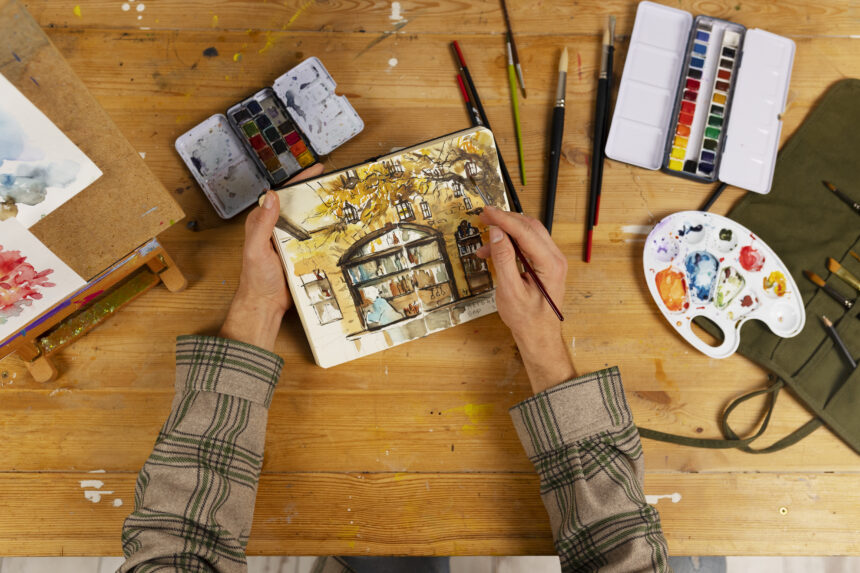Home-based craft and art studios are increasingly popular among creative individuals who want to turn their passion into a business. Whether you create handmade crafts, paintings, jewelry, or other artistic works, it’s important to understand how home insurance can provide the necessary coverage for your unique studio space. Navigating home insurance for a home-based craft and art studio requires careful consideration of various factors. Here are some key points to help you understand and secure the right insurance coverage:
- Review Your Current Home Insurance Policy: Start by reviewing your existing home insurance policy to determine if it covers your craft and art studio. Standard home insurance policies typically provide coverage for personal use of the property, but they may exclude or limit coverage for business-related activities. Understand the extent of your current coverage and identify any gaps that need to be addressed.
- Inform Your Insurance Provider: Contact your insurance provider to inform them about your home-based craft and art studio. This step is crucial, as failing to disclose your business activities could potentially invalidate your coverage. Provide detailed information about the nature of your studio, the type of work you do, and any potential risks associated with your craft and art materials.
- Determine the Value of Your Craft and Art Inventory: Take inventory of your craft and art supplies, tools, equipment, and finished products. Determine their total value, as this information will be important when selecting appropriate coverage limits. You may need to consider additional coverage to protect your inventory in the event of theft, damage, or loss.
- Consider Liability Insurance: Liability insurance is essential for home-based craft and art studios. It protects you in case someone is injured on your property or if your products cause harm to others. For example, if a customer trips and falls in your studio or experiences an allergic reaction to one of your products, liability insurance can cover legal fees, medical expenses, and potential settlements. Consult with your insurance provider to ensure that your policy includes adequate liability coverage.
- Evaluate Business Interruption Coverage: Business interruption coverage is crucial for home-based craft and art studios. It provides financial protection in the event that your studio is temporarily unusable due to covered damages, such as fire, water damage, or severe weather. This coverage can compensate for lost income and help cover ongoing expenses while you’re unable to operate your business. Discuss business interruption coverage options with your insurance provider to ensure you have adequate protection.
- Insure Equipment and Materials: Craft and art studios often contain expensive equipment and materials. These can include specialized tools, sewing machines, pottery wheels, easels, and high-quality art supplies. Ensure that your home insurance policy covers these items against theft, damage, or loss. If necessary, consider adding specific endorsements or riders to your policy to provide adequate coverage for your equipment and materials.
- Consider Additional Coverage Options: Depending on the specific needs of your craft and art studio, you may want to consider additional coverage options. For example, if you sell your products online or at craft fairs, you may need coverage for off-premises sales. If you offer workshops or classes, you may need coverage for instructional activities. Discuss these additional coverage options with your insurance provider to ensure you have comprehensive protection.
- Implement Safety Measures: Insurance coverage alone is not enough to mitigate risks. Take proactive steps to maintain a safe studio environment. This can include implementing safety protocols, using proper ventilation systems for certain materials, storing hazardous substances appropriately, and regularly inspecting your studio for potential hazards. By taking these precautions, you can reduce the likelihood of accidents and potential liability claims.
In conclusion, navigating home insurance for a home-based craft and art studio requires careful consideration of the specific risks and coverage needs associated with your creative business. By reviewing your current policy, informing your insurance provider, assessing the value of your inventory, considering liability coverage, evaluating business interruption coverage, insuring equipment and materials, exploring additional coverage options, and implementing safety measures, you can ensure that your craft and art studio is properly protected. Consult with insurance professionals to tailor your policy to your unique needs and obtain the appropriate coverage for your home-based creative business.










